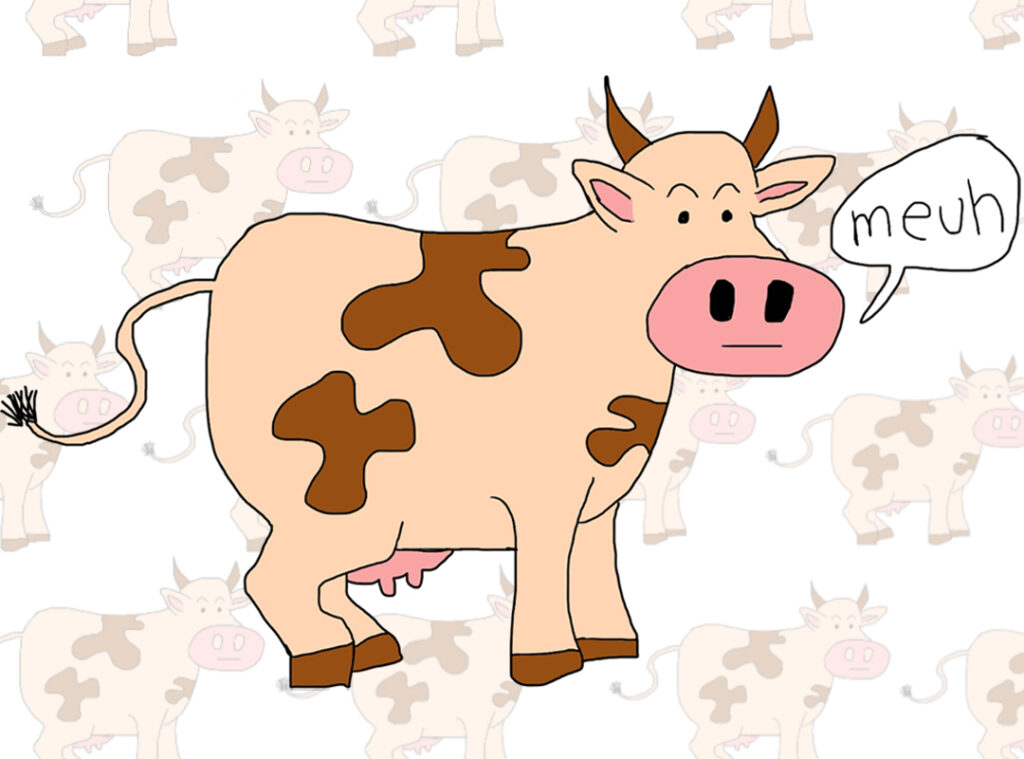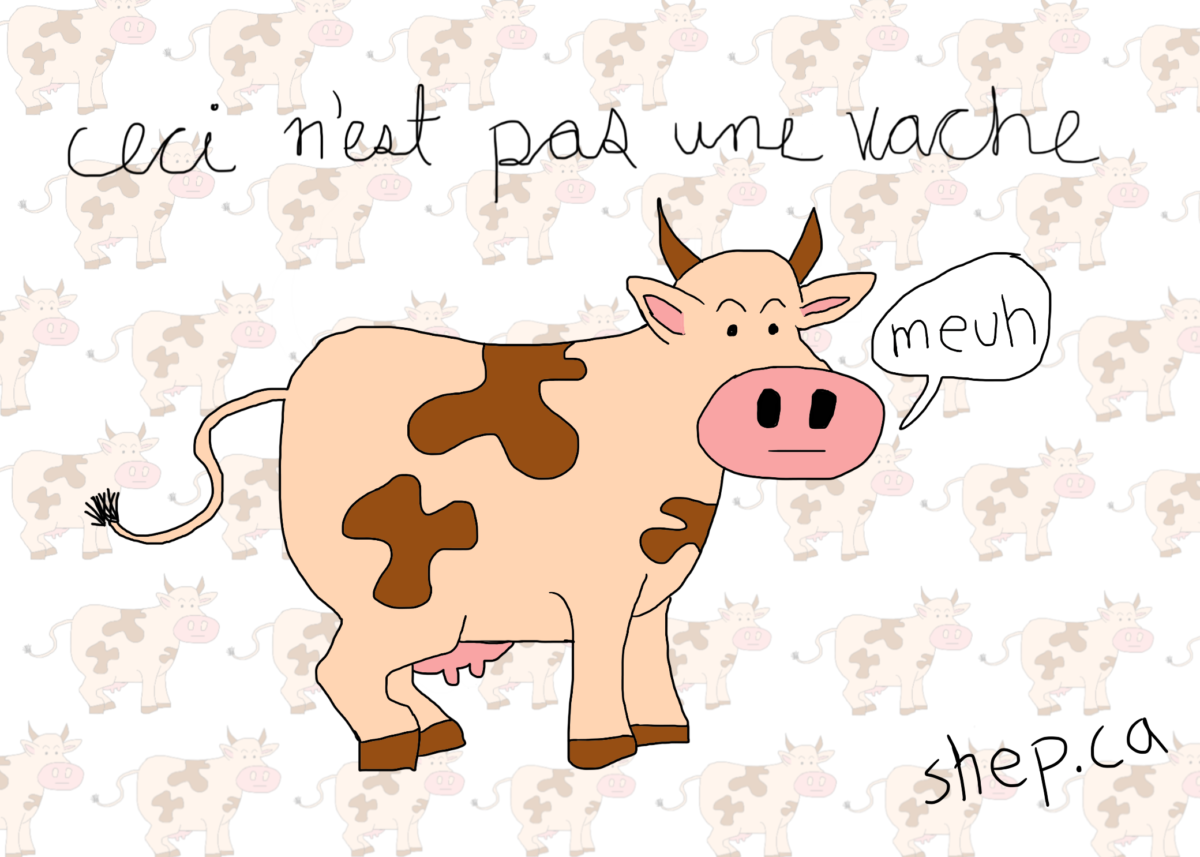Building on last week’s post about the tension in higher ed marcomms; that of the need to pursue the risk-tolerant needs of marketing while also being the caretaker of a brand, which is generally risk-averse.
Wrapping it up, it struck me that we’re dealing with bidirectional symbolism. On the brand stewardship front, I think this is a fairly straightforward proposition. A university or college’s brand boils down to just a few highly charged representations: a crest, a school name, a set of colours, the name of their sports teams. What people think and feel when they see the crest or hear the name is the essence of brand stewardship.
MarComms and the Journey to Symbol
I want to break down the marketing and communications journey from the thing to the symbol a bit more, however. If you asked me what marketing and communications was all about, I’d say something along the lines of getting the right information to the right people at the right time, in a way that attracts and keeps their attention.
Re-parsing that sentence in the context of symbol generation, though:
getting the right information to the right people at the right time, in a way that attracts and keeps their attention
This applies to pretty much every aspect of the thing, but taking research promotion as a f’rinstance, let’s walk through the path from The Thing Itself to the symbol of the thing.
Let’s talk about cows.

There are about a billion cows on Earth right now. That’s… that’s a lot of cows. It’s a mind-boggling amount of cows. It’s an abstraction of cows; if I try to think of a number of distinct cows that I can hold in my mind at one moment, I could probably get to 40 or 50 concurrent cows that I can maintain, mentally. A billion cows is a lot more cows than that.
So what happens if you’re promoting the research of somebody who is researching cows?
Before you even get to marketing and communications, you’re forcing the Reality of Cows through a number of abstractions.
Cow Abstractions
Start with one billion cows, and the totality of what those cows represent. Height, weight, feeding habits, milk and meat production, environmental impact, religious and cultural importance, cow subtypes, evolutionary history of cows, ethical considerations around cows and cow farming, cow behaviour and social structures, domestic v. wild cows… there is so much to cows.
But, we’re going to take the vast totality of one billion cows, and push it through the lens of a single field. What area of endeavour is approaching the totality of cows? Anthropology? Engineering? Socioeconomics? Philosophy and ethics?
From there, we’re going to pick an area of focus within that area of endeavour. A researcher looking at the environmental impact of cows’ methane production based on feed type.
It’s an impossibility for a researcher to research all billion cows individually. So we have to have a set of cows that the researcher can reasonably find or gather data on.
Then, we’re confined to the data that is actually collected.
The researcher — subject to the limits of funding, capacity, and the strength of data — will write and present findings that condense the totality of gathered data into some sort of paper or report. This may, or may not, make it into an academic journal.
Crossing the MarComms Line
Assuming something about the paper is noteworthy (and really, all papers are noteworthy, if you look at them hard and can take a creative view of talking about research), a news piece or press release further condenses the research into a short, public- or specialist-facing piece of content that abbreviates the paper into a digestible short read.
The story is, of course, accompanied by a dazzling visual, or short video, which represents a key concept or very high-level points as presented in the research.
But we have to get people to the story, so a social media post that takes the most powerful idea in the story is pushed out onto the fast-paced worlds of Twitter, LinkedIn, Facebook, Instagram, etc. Maybe somebody makes a rad TikTok about cow research!
The key element of the social post isn’t the text — sorry, writers — it’s the image or an even-shorter video that can get somebody to stop scrolling and listen up. This is often a reworked, condensed, or cropped version of the arresting image mentioned above that was developed for the story.
And the above points are forced through their own concurrent lenses of social media best practices — algorithmically, you’re rewarded or punished based on post engagement, so the juggling act is a constant tension (there’s that word again) between trying to maintain loyalty with the upstream complexity, and the need to push out something that’s gonna get hella likes or watch your social platforms collapse.
Good social media presence — which is one of the pillars of responsibility in this role — means using language, images and approaches that drive social media engagement, and doing that without compromising the integrity of what you’re speaking about is an exercise in compromise as much as creativity.
So — through a series of steps — we have reduced one billion cows, and the totality and vastness and complexity of cowness, to an animated cow GIF on TikTok over that “Oh No” audio snippet. Or, in a tortuously tall image (sorry, phone-scrollers):

Each step moves you from the total reality toward symbolism. The tension, obviously, is in finding the symbol that best preserves integrity of the original idea but also functions as an arresting symbol that can engage attention and curiosity.
But each step also invites higher levels of interpretation, and demands more of the audience to move them from symbol to each escalating step of reality, culminating most often in my world with the news piece, and sometimes — ideally — with people checking out the actual research.
This is a good time to shout out my Ryerson English professor, Roberta Imboden (RIP), who largely abdicated most of a Canadian Literature course one semester to talk to us a lot about Jacques Derrida. I still don’t really get Derrida profoundly (sorry, Roberta), but having even a baseline understanding of deconstruction and what it means for work to exist in a dynamic and collaborative relationship with the reader, rather than simply being in a constant “push” state, is maybe one of the most important things I learned in university. Lives of the Saints was also a real good book.
Symbolism isn’t front of mind for me in the daily, but maybe it should be more — the nature of representation, reduction, and the steps of complex compromise that go into knowledge translation. It’s a vital part of the job. I think I might look up some sort of Derrida refresher this week.
March 28, 2021
Soundtrack:
DJ Black Low, “Uwami”
Otzeki, “Now is a Long Time”
Whitehorse, “Modern Love”
Dinah Washington, “Lady Sings the Blues”
